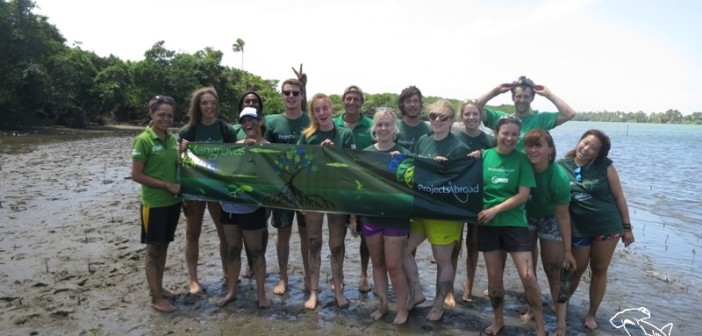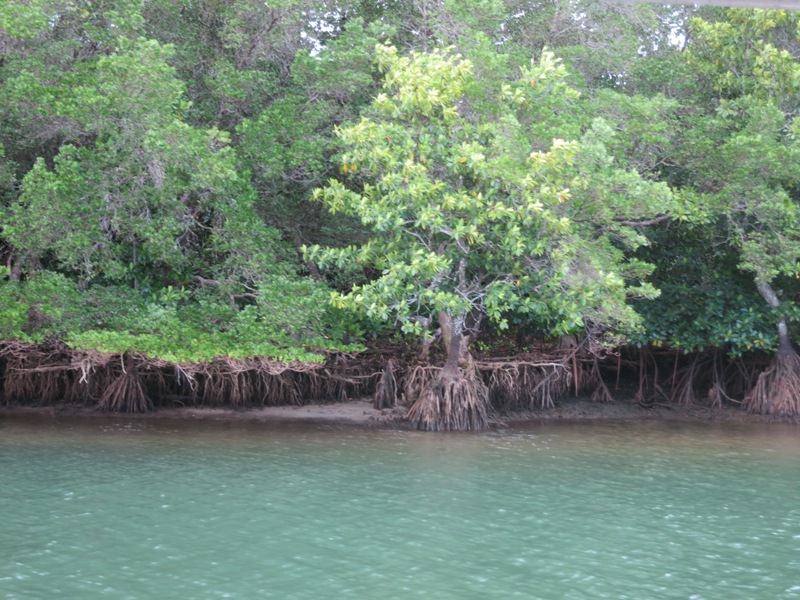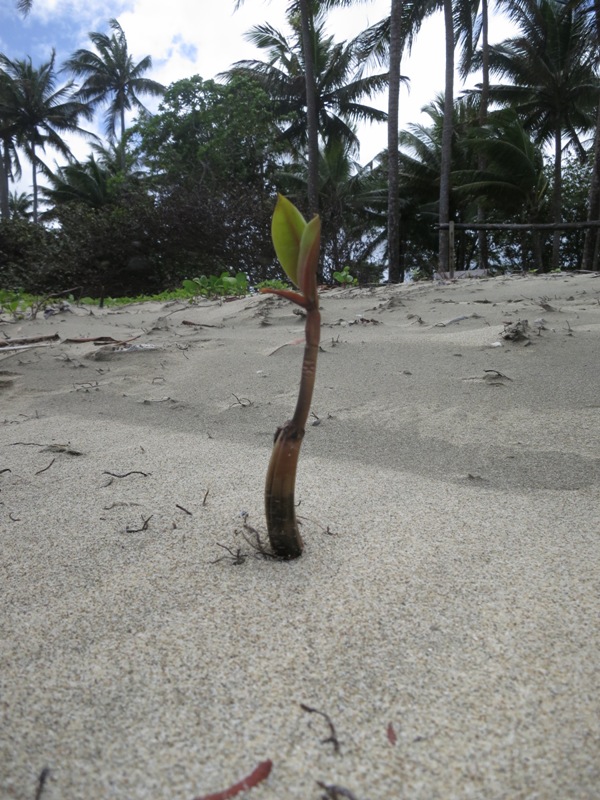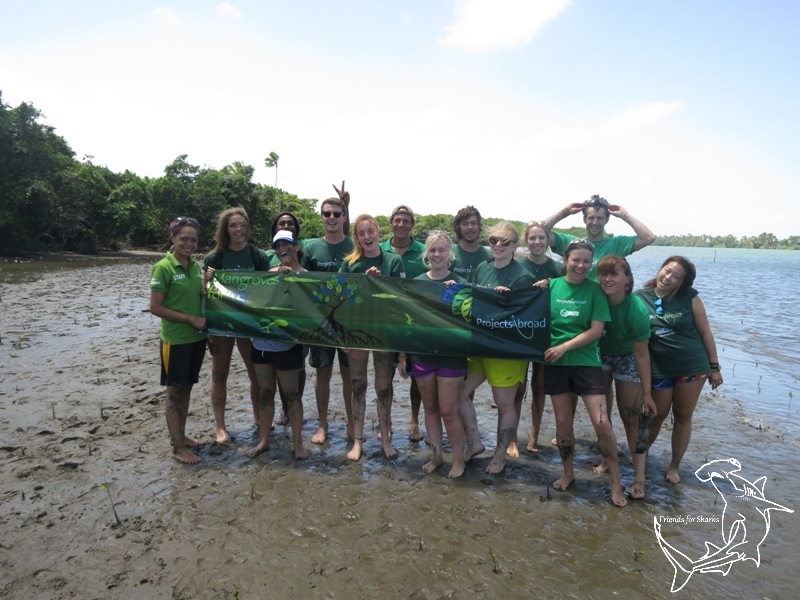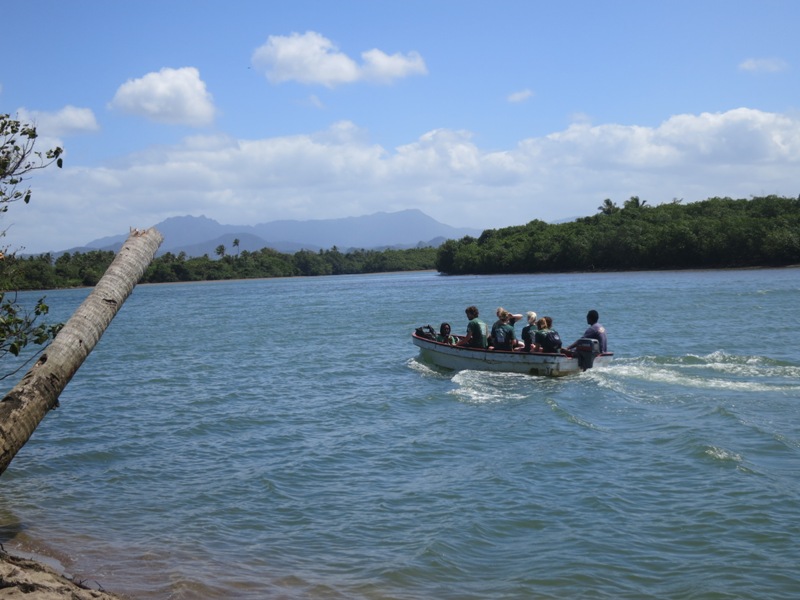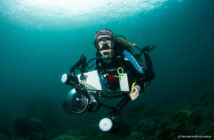When it comes to scuba diving it is hard to beat exploring colourful tropical reefs, history-filled wrecks, sun-dappled kelp forests and foreboding caves. Every scuba diver has their favourite type of diving or dive site and their favourite creature to encounter, with sharks and nudibranchs being high on many lists. But what of mangroves? There are 110 species of mangrove and they only grow in tropical regions. Not only are three quarters of all tropical fish species born within mangrove forests but they provide unusual diving opportunities for those seeking a new challenge.
Why are mangrove forests important?
Mangroves store fifty times more carbon in their soils by area than tropical forests and ten times more carbon than temperate forests. They are the main producers in the oceans and their decayed leaf litter provides nutrients for phytoplankton to grow. They are the base of ALL ocean ecosystems and support the entire food web that we humans rely upon.
These forests are vital to the health of the oceans and they offer shelter, habitat and nurseries for marine life including fish, sharks, marine mammals and coral species. They also act as sediment traps and ensure nearby coral reefs do not become silted and unhealthy as a result of human activities on land. Mangroves also break down pollutants from industry and agriculture and play a vital role in protecting the commercial fisheries that we rely upon for sustenance and profit.
The total global goods and services provided by mangroves are estimated to be worth US$186 million per year.
These goods include timber and plant products that are sold within local and international marketplaces and the ecosystem services listed above. Mangroves also protect coastal communities from wind and wave action, such as tsunamis, and minimise the loss of human life and damage to property in extreme weather events. As we continue to urbanise coastal areas globally, this service is of great importance to us.
As scuba divers, why should we care?
Mangroves also support tourism industries by ensuring healthy dive sites and the protection of coastal resorts, which divers often frequent. If we wish to continue exploring and enjoying healthy coral reefs, mangroves must be protected. Without them there would be less marine life to enjoy and the health of reefs would decline. As divers, it is our responsibility to care for the ocean environment that is our playground.
What are the threats to mangroves?
Mangroves are disappearing at a rate of 1% every year and half of the original mangrove forest has been lost already. The majority of which has been lost in the last twenty years due to coastal development, agricultural practices, pollution, unsustainable fishing and the main threat to mangroves: shrimp (or ‘prawn’) farming.
The main consumers of shrimp are the United States, Japan, Canada and Europe. There is very high demand for shrimp and it is a profitable business. Mangrove forests are cleared for shrimp pools, which are only suitable for short periods of time before they are abandoned and more forest is cleared for use. This unsustainable practice and our taste for shrimp has resulted in the long-term loss of mangrove forest and vast areas of land being laid to waste to meet our appetite for seafood.
What can you do to help?
There are rewarding and valuable mangrove conservation projects underway around the globe that offer volunteer placements for those keen to help. Why not combine your need for a tropical diving fix with some valuable conservation work? Organisations such as Projects Abroad, the Mangrove Action Project and Working Abroad all offer volunteering opportunities in far-flung locations with spectacular diving opportunities.
As consumers, we can each spend our money wisely by supporting dive businesses that focus on conservation. Beqa Adventure Divers in Fiji offer the world’s best Bull shark dive and they work closely with Mangroves for Fiji and support the local community. We can also choose to be a responsible consumer by avoiding shrimp products and only eating fish and seafood that has been fished sustainably.
Where can you experience mangrove diving?
Raja Ampat’s Blue Water mangroves is a series of islands in Indonesia. The dive sites at this location offer clear water diving, a multitude of coral life growing upon mangrove roots and unique photographic opportunities. There is also the opportunity to see saltwater crocodiles and enjoy exploring seagrass beds.
Lac Bay in the Bonaire National Marine Park is home to one of the Caribbean’s best-preserved mangrove forests and offers the chance to snorkel in the mangrove channels. Scuba diving is also available at nearby dive sites, where you can enjoy crystal clear waters, a multitude of reef fish species and the occasional passing turtle.
Belize barrier reef mangrove forests provide the opportunity to explore coral-covered mangrove roots, enjoy a wide variety of fish life and visit Swallow Caye in search of manatees. This barrier reef is the longest in the western hemisphere and offers a variety of world-class dive sites to suit different tastes and abilities.
Jardines de la Reina is a marine park in the Caribbean that consists of 250 coral and mangrove islands. The dive sites at the ‘Gardens of the Queen’ are home to an array of species including pillar corals, gorgonians, sponges, groupers, snappers and six different shark species including Great Hammerheads.




